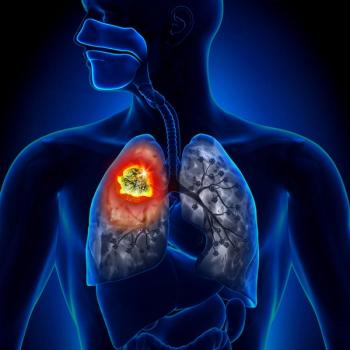
Advances in Breast Imaging
Question 1: Breast cancer remains among the most frequent diagnoses of cancer in women in the United States. Importantly research indicates that deaths due to breast cancer are decreasing, in part due to advances in treatment and earlier detection. Could you please comment about the advances in breast cancer imaging that have helped to facilitate earlier detection?Question 2: Could you briefly comment on the role of each of these modalities used in breast imaging?A. X-Ray mammography (digital and film screen)B. UltrasoundC. Molecular imagingD. Breast-specific gamma imagingQuestion 3: Could you please discuss indications for breast-specific gamma imaging and the clinical data to support these indications?Question 4: Are you able to cite an example as to how you used breast-specific gamma imaging in the clinic?Question 5: Could you please discuss the role of imaging in staging and treating breast cancer most appropriately? Is there new or novel technology that oncologists should be aware of when imaging is used for optimal visualization to assist in staging a woman diagnosed with breast cancer?Question 6: In your own clinical experience, what advances have you witnessed in breast imaging, particularly in regard to breast cancer, over the past 5 years?Question 7: Do you have any final comments you would like to make to our audience about advances or trends in breast imaging as it pertains to women with breast cancer?
Question 1: Breast cancer remains among the most frequent diagnoses of cancer in women in the United States. Importantly research indicates that deaths due to breast cancer are decreasing, in part due to advances in treatment and earlier detection. Could you please comment about the advances in breast cancer imaging that have helped to facilitate earlier detection?
Dr. Bhm-Vlez: Breast cancer is the most common cancer in women in the United States with an incidence that increases about 0.5% per year. In 2008, 178,480 new cases of invasive breast cancer and 62,030 cases of ductal carcinoma in situ (DCIS) were diagnosed with approximately 40,460 female and 470 male deaths. Fortunately, new improvements in screening, diagnosis, and treatment have lead to declining mortality rates. Screening mammography programs have increased the detection of DCIS and stage I breast cancer with a decreased incidence of stage II through stage IV disease. Currently 96% of breast cancers are detected early and are able to be treated successfully. Newly diagnosed cancers are usually smaller with axillary lymph nodes more often than not being free of metastases, and therefore more amenable to breast conservation and less likely to require chemotherapy. The 5-year survival for women diagnosed with stage I breast cancer is 95% vs only 20% for stage IV. In addition, the cost of treating early breast cancer is 10 times less than that of late stages.
It has been shown that breast cancer is a heterogeneous systemic disease associated with different clinical outcomes. Pathologic assessment of the status of both hormonal (estrogen and progesterone receptors) and human epidermal growth receptors (HER2) contributes to staging and prognosis, and therapy choices. We know that the most successful therapeutic chemotherapy regimens are those that target these receptors. Since metastatic breast disease is seen in 25% to 40% of patients and is incurable, it is important to identify the extent of the disease so that the appropriate therapy is started.
References
1. Humphrey LL, Helfand M, et al: Breast cancer screening: A summary of the evidence for the U.S. Preventive Services Task Forc. Ann Intern Med 137:347-360, 2002.
2. Smith RA, Duffy SW, et al: The randomized trials of breast cancer screening: What have we learned? Radiol Clin North Am 42(5):793-806, 2004.
Question 2: Could you briefly comment on the role of each of these modalities used in breast imaging?
Compared to screen film mammography, digital mammography exposes patients to slightly lower doses of radiation, while optimizing the image contrast. Digital mammography improves the sensitivity of breast cancer detection from 55% to 70% in women younger than 50 years (pre- or perimeopausal) with dense breasts. However, digital mammography is significantly more expensive than film screen mammography. The equipment costs approximately $400,000 vs $100,000 plus is associated with higher expenses for maintenance, storage, and retrieval.
Studies have shown that a second mammography reader can increase the number of cancers detected by 4% to 14% without changing the false-positive rates. However, this added cost is not reimbursed and therefore is impractical in most practices. Computed-aided detection (CAD) achieves the same detection rate as two readers and increases the sensitivity (especially for microcalcifications), but it is not as effective for masses. However the improved sensitivity with CAD is offset by both an increase in false positives and biopsy rates. Scroll down for further discussion on ultrasound, molecular imaging, and breast-specific gamma imaging.
References:
1. Fletcher SW, Elmore JG. Mammographic screening for breast cancer. N Engl J Med 348:1672-1680, 2003.
2. Smith-Bindman R, Chu P, Miglioretti DL et al: Physician predictors of mammographic accuracy. J Natl Cancer Inst 97: 358-367, 2005.
3. Buist DSM, Porter PL, et al: Factors contributing to mammography failure in women aged 40-49 years. J Natl Cancer Inst 96: 1432-1440, 2004.
4. Carney PA, Miglioretti DL, Yankaskas BC, et al: Individual and combined effect of age, breast density, and hormone replacement therapy use on the accuracy of screening mammography. Ann Intern Med 138:168-175, 2003.
5. Pisano ED, Gatsonis C, Hendrick E, et al: Diagnostic performance of digital versus film mammography for breast cancer screening. N Engl J Med 353:1056-1067, 2005.
6. Hambly NM, McNicholas MM, Phelan N, et al: Comparison of digital mammography and screen-film mammography in breast cancer screening: A review in the Irish Breast Screening Program. AJR Am J Roentgenol 193:1010-1018, 2009.
The indications for breast ultrasound include:
(1) evaluation of a palpable or mammographically visualized mass;
(2) guidance for interventional procedures, for radiation planning, the initial imaging technique for the young (under 30 years of age), in pregnant, or lactating women;
(3) for the evaluation of implants, especially silicone.
Additionally, ultrasound has been very useful for the second-look targeted ultrasound after a suspicious lesion is seen on the MRI or breast-specific gamma imaging for guidance of the biopsy. Screening is not an indication for breast ultrasound, however, various studies have shown that the addition of ultrasound to mammography in high-risk women with dense breast tissue will increase detection of breast cancer. The ACRIN 6666 study found that in this group of women, the addition of ultrasound to mammography yielded an additional 7.2 cancers per 1,000 women. The sensitivity of combined mammography and ultrasound was 77.5% compared to 49% with mammography alone. In this multicentered study, 29% of the cancers were only visualized by ultrasound. However, it is important to realize that the positive predictive value of screening ultrasound is low, that is to say that only 8.6% of the biopsies performed are positive for breast cancer compared to 14.7% with mammography. The increased number of false positives resulted in additional biopsies and cost, and created unnecessary anxiety in patients.
References
1. Kolb TM, Lichy J, Newhouse JH: Comparison of the performance of screening mammography, physical examination, and breast US and evaluation of factors that influence them: An analysis of 27,825 patient evaluations. Radiology 225(1):165-175, 2002.
2. Berg WA, Blume J, Cormack JB, et al: Operator dependence of physician-performed whole breast US: Lesion detection and characterization. Radiology 241(2):355-366, 2006.
3. Berg WA, Mendelson EB, Blume JD, et al: Performance of experienced breast imagers in interpreting breast ultrasound: results of training in the ACRIN 6666 protocol. AJR Am J Roentgenol 182(4):34, 2004.
3. Berg WA: Supplemental screening sonography in dense breasts. Radiol Clin North Am 42(5): 845-851, 2004.
4. Kolb TM, Lichy J, Newhouse JH: Occult cancer in women with dense breasts: detection with screening US- diagnostic yield characteristics. Radiology 207(1):191-199, 1998.
5.Tabr L, Vitak B, Chen HH, et al: The Swedish Two-County Trial twenty years later: Updated mortality results and new insights from long- term follow up. Radiol Clin North Am 38(4):625-651, 2000.
6. Buchberger W, Niehoff A, Obrist P, et al: Clinically and mammographically occult breast lesions: Detection and classification with high-resolution sonography. Semin Ultrasound CT MR 21(4): 325-336, 2000.
7. Crystal P, Strano SD, et al: Using sonography to screen women with mammographically dense breasts. AJR Am J Roentgenol 181:177-182, 2003.
8. Gordon PB, Goldenberg SL: Malignant breast masses detected only by ultrasound: A retrospective review. Cancer 76(4):626-630, 1995.
9. Kaplan SS: Clinical utility of bilateral whole-breast US in the evaluation of women with dense breast tissue. Radiology 221(3):641-649, 2001.
10. Berg WA, Blume JD, et al: Combined screening with ultrasound and mammography alone in women at elevated risk of breast cancer JAMA 2008;299(18):2151-2163.
11. American Institute of Ultrasound in Medicine (AIUM): AIUM Standard for the Performance of Breast Ultrasound Examination. AIUM, 2002.
Breast MRI has become an important tool for the detection and characterization of breast cancer. It has been reported to have diagnostic sensitivities of 94% to 99% for invasive breast malignancies and 58% to 89% for DCIS. Applications of breast MRI include: evaluation of the extent of ipsilateral malignancy, screening of the contralateral breast in patients with newly diagnosed breast cancer, screening women who are at high risk, for the evaluation of patients with metastatic axillary adenocarcinoma and an unknown primary cancer site, and for the assessment of silicone implant integrity. However, MRI costs approximately 10 times more than mammography, is not widely available, and cannot be used in women with implanted medical devices or who suffer from claustrophobia.
In addition, the overlap in the MRI features of certain benign and malignant lesions decrease the specificity and positive predictive value, which results in an increase in the biopsy rate. If a suspicious lesion is clinically and mammographically occult and cannot be found on a targeted ultrasound (which can detect 46% of these lesions), the biopsy or needle localization needs to be done with MRI guidance. MRI-guided procedures are time consuming and costly.
References
1. Saslow D, Boetes C, Burke W, et al. American Cancer Society guidelines for breast screening with MRI as an adjunct to mammography. CA Cancer J Clin 57(2):75-89, 2007.
2. Lehman CD, Isaac C, Schnall MD, et al: Cancer yield of mammography, MR and US in high-risk women: Prospective multi-institutional breast cancer screening study. Radiology 244(2):381-388, 2007.
3. Warner E, Plewes DB, Hill KA, et al: Surveillance of BRCA1 and BRCA2 mutation carriers with MRI, ultrasound, mammography, and clinical breast examination. JAMA 292(11): 1317-1325, 2004.
4. Meissnitzer M, Dershaw DD, Lee CL, et al: Targeted ultrasound of the breast in women for whom biopsy has been recommended. AJR Am J Roentgenol 193:1025-1029, 2009.
5. Kuhl CK, Schrading S, Leutner CC, et al: Mammography, breast ultrasound, and MRI for surveillance of women at high familial risk for breast cancer. J Clin Oncol 23(33):8469-8476, 2005.
6. Gutierrez RL, DeMartini WB, Eby PR, et al: BI-RADS lesion characteristics predict likelihood of malignancy in breast MRI for masses but not for nonmasslike enhancement. AJR Am J Roentgenol 193:994-1000, 2009.
7. Bedrosian I, Mick R, Oral SG: Changes in the surgical management of patients with breast cancer based on preoperative MRI. Cancer 98:468-473, 2003.
8. Braun M, Polcher M, Schrading S, et al: Influences of preoperative MRI on the surgical management of patients with operable breast cancer. Breast Cancer Res Treat 111:179-187, 2007.
9. Lehman C: MRI evaluation of the contralateral breast in women with recently diagnosed breast cancer. N Engl J Med 356(13):1295-1303, 2007.
Interpretation of the BSGI and PEM is much faster than with MRI since the number of images obtained is significantly less. Both modalities achieve high sensitivity for the detection of breast cancer and higher specificity than mammography with no difference noted between the detection of cancer in the fatty and dense breast. False positives such as fibroadenomas, fibrocystic changes, and fat necrosis are seen on BSGI and PEM but less frequently than with MRI. PEM can be followed with whole-body PET imaging to evaluate for metastatic disease. It should be noted that, the radiotracer and procedure cost is higher for PEM than BSGI. PEM also requires patient to fast for imaging to begin one hour after the injection, and with the patient needing to maintain a distance from others for 45 minutes after the procedure. In addition, PEM studies are only reimbursed in those patients with known cancer, whereas with BSGI reimbursement is for both pre- and post-diagnosis of breast cancer. Similar to MRI, these techniques require image-specific biopsy capabilities, so that when a suspicious lesion is visualized it can be sampled using that modality. The BSGI guided biopsy device is currently not FDA approved.
References
1. Sampalis FS: International prospective evaluation of scintinmammography with 99mTechnetium sestamibi. Am J Surg 185:544-549, 2003.
2. Brem R, Floerke A, Rapelyea J, et a: Breast specific gamma imaging as an adjunct modality for the diagnosis of breast cancer. Radiology 247(3):651-657, 2008.
3. Zhou M, Johnson N, et al: Real-world application of breast-specific gamma imaging, Initial experience at a community breast center and its potential impact on clinical care. Am J Surg 195:631-635, 2008.
4. Zhou M, Johnson N, Gruner S, et al: Clinical utility of breast specific imaging for evaluating disease in the newly diagnosed breast cancer patient. Am J Surg 197(2): 159-163, 2009.
5. Brem R, Fishman M, Rapelyea JA: Detection of ductal carcinoma in situ with mammography, breast-specific gamma imaging and MRI: A comparative study. Academic Radiology 14(8):945-950, 2007.
6. Brem R, Ioffe M, Rapelyea JA, et al: Invasive lobular carcinoma: Detection with mammography, sonography, MRI and breast specific gamma imaging. AJR Am J Roentgenol 192:379-383, 2009.
7. Brem R, Petrovich R, Rapelyea J et al: Breast-specific gamma imaging with 99m Tc-sestamibi and MRI in the diagnosis of breast cancer -- A comparative study. The Breast Journal 13(5):465-469, 2007.
Question 3: Could you please discuss indications for breast-specific gamma imaging and the clinical data to support these indications?
Dr. Bhm-Vlez: The indications for BSGI include:
(1) BSGI complements mammography and ultrasound for patients in whom imaging is difficult, such as in women with dense breast tissue or breast implants, in the postsurgical breast, and in women who have had silicone and paraffin injections.
(2) In patients with known cancer to determine the extent of the disease, evaluate for multifocal, multicentric, and bilateral disease.
(3) In those patients with questionable areas seen on mammography or breast ultrasound to reassure probably benign lesions or BI-RADS 3.
(4) Palpable abnormality or nipple discharge with a normal mammogram and breast ultrasound.
(5) To differentiate a scar from a recurrent cancer.
(6) Evaluating the axillary regions for lymph node status in breast cancer patients.
(7) Predicting chemotherapeutic response,
(8) Monitoring primary tumor response to neoadjuvant therapy.
(9) Evaluation of multiple lesions or clusters or microcalcifications to aid in the biopsy targeted selection.
(10) Evaluation in women with indeterminate or malignant type cluster of microcalcifications prior to stereotactic core biopsy.
(11) Patients in whom an MRI of the breast is indicated and in those where MRI is not technically possible due to the presence of ferromagnetic implants, body habitus, obesity, or patient claustrophobia.
(12) In high-risk patients similar to the MRI screening criteria; personal history, parent, child, or sibling with BRCA1 or BRCA 2 mutations, established lifetime risk of 20% to 25% or history of chest radiation between the ages of 10 and 30 years of age.
References
1. Bekis R, Derebek E, Balci P, et al:. Screening mammographic non-palpable suspicious breast lesions: Preliminary results. Nuklearmedizin 43(1):16-20, 2004.
2. Bongers V, Perre C, deHooge P: The use of scintimammography for detecting the recurrence of locoregional breast cancer: Histolopathologically proven results. Nucl Med Commun 25(2):145-149, 2004.
3. Coover LR, Caravaglia G, Kuhn P: Scintimammography with dedicated breast camera detects and localizes occult carcinoma. J Nucl Med 45(4):553-558, 2004.
4.Scillaci O, Buscombe JR: Breast scintigraphy today: Indications and limitations. EurJ Nucl Med Mol Imaging. 31(Suppl 1):S35-S45, 2004.
5. Rhodes DJ, O’Connor MK, Phillips SW, et al: Molecular breast imaging: A new technique using technetium Tc 99m scintimammography to detect small tumors of the breast. Mayo Clin Proc 80:24-30, 2005.
6. Tallefer R, et al: Clinical applications of scintimammography. Sem Nuc Med 35:100-115, 2005.
7. Dunnwald LK, Gralow JR, Ellis GK, et al: Residual tumor uptake of Tc99m sestamibi after neodjuvant chemotherapy for locally advanced breast carcinoma predicts survival. Cancer 103(4):680-688, 2005.
8. Hussain R, Buscombe JR: A meta-analysis of scintimammography: An evidence-based approach to its clinical utility. Nucl Med Commun 27(7):589-594, 2006.
9. O’Connor MK, Phillips SW, et al: Molecular Breast Imaging: Advantages and limitations of a scintimammographic technique in patients with small breast tumors. Breast J 13 (1):3-11, 2007.
10. Orazio S, Buscombe JR: Breast scintigraphy today: Indications and limitations. Eur J Nucl Med Mol Imaging 31(Supplement 1), 2004.
Question 4: Are you able to cite an example as to how you used breast-specific gamma imaging in the clinic?
Dr. Bhm-Vlez: In our practice, we found that BSGI is helpful in evaluating those patients who have a palpable mass but with a negative mammogram and ultrasound. Traditionally, these patients would have been sent to a breast surgeon for management.
Our results show that if the BSGI is normal in this group of patients, the negative predictive value is 95%. That is to say we can reassure these patients that there is less than 5% chance she does has an invasive cancer.
In those patients with a positive BSGI, the abnormality was usually identified on a second look targeted ultrasound and subsequent biopsies were positive in 27% of the cases.
Question 5: Could you please discuss the role of imaging in staging and treating breast cancer most appropriately? Is there new or novel technology that oncologists should be aware of when imaging is used for optimal visualization to assist in staging a woman diagnosed with breast cancer?
Dr. Bhm-Vlez: Currently it is the standard of care to perform an MRI of both breasts for preoperative evaluation of patients with newly diagnosed breast cancer. Since MRI is able to detect unsuspected disease in the ipsilateral breast and in 3% of patients in the contralateral breast as well, it can change in the management plan.
In patients with negative surgical margins after breast conservation surgery, the 10-year recurrence rate is low. After the initial lumpectomy, positive margins are seen in 40% of cases, requiring additional surgery, cost, and anxiety. MRI can improve the surgical outcome by better identifying the extent of the disease resulting in a decrease in the positive margins rates. MRI can also better visualize the presence of adenopathy, occult contralateral disease, and pectoralis or chest wall involvement, and therefore guide in the surgical and radiation planning. It can also help in identifying patients who would be eligible for partial breast radiation.
However, there are certain surgeons who believe that unsuspected disease detected by MRI prior to breast conserving therapy may be of little clinical consequence since it is controllable by radiation therapy and may cause an increase in the rate of mastectomies and delays in surgery.
References
1. Bedrosian I, Mick R, Oral SG: Changes in the surgical management of patients with breast cancer based on preoperative MRI. Cancer 98:468-473, 2003.
2. Braun M, Polcher M, Schrading S, et al: Influences of preoperative MRI on the surgical management of patients with operable breast cancer. Breast Cancer Res Treat 111:179-187, 2007
Question 6: In your own clinical experience, what advances have you witnessed in breast imaging, particularly in regard to breast cancer, over the past 5 years?
Dr. Bhm-Vlez: Advancements in breast imaging include digital mammography with CAD, significant improved dedicated breast ultrasound equipment with high-resolution transducers, molecular imaging which include MRI, BSGI, and PEM, and the ability to perform imaging (stereotactic, ultrasound MRI, PEM) guided interventional procedures.
Question 7: Do you have any final comments you would like to make to our audience about advances or trends in breast imaging as it pertains to women with breast cancer?
Dr. Bhm-Vlez: I think that the future of breast imaging for problem solving in the “diagnostic” patient rests on the fusion of existing imaging modalities combining the anatomic and physiologic characteristics of the lesions in an attempt to increase the specificity and therefore decrease the biopsy rate. The future development of patient- specific cellular targeted contrast agents and radiopharmaceuticals will play a major role in attaining better diagnostic and therapeutic outcomes.
References
1. Kuhl CK: The 'Coming of Age' of nonmammographic screening for breast cancer. JAMA 300(13):2203-2205, 2008.
2. Berg WA: Beyond standard mammographic screening: Mammography at age extremes, ultrasound, and MRI. Radiol Clin North Am 45(5):895-906, 2007.
3. Keen JD: Nonmammographic screening for breast cancer. JAMA 300(13):1515-1516, 2008.
4. Morrow M: MRI in breast cancer: Is seeing always believing? Eur J Cancer 41:1368-69, 2005.
Newsletter
Stay up to date on recent advances in the multidisciplinary approach to cancer.



















































































